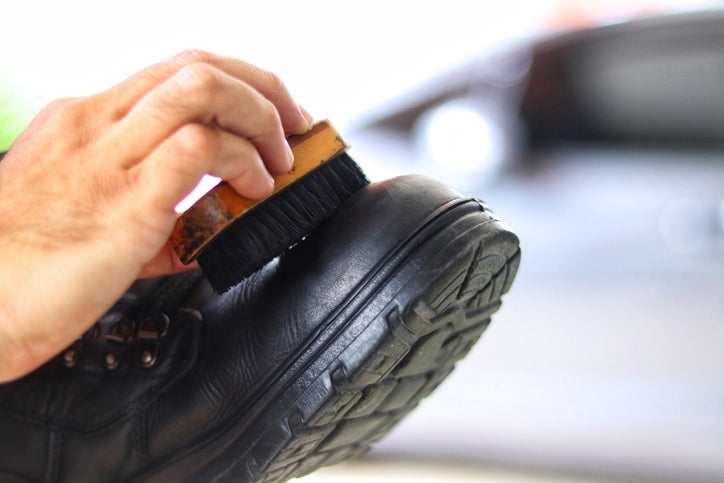
Whether LEO, Military, mountaineer, hiker or civilian, ask what their favorite tactical boot material is and chances are they'll tell you either Nubuck leather, leather, and ballistic nylon mix or any other kind of genuine leather.
It's undeniable that leather is one of the most beloved and popular choices for not only boots but shoes as well for a wide range of active people. Leather, however, can be expensive. Investing in the right leather boot, whether it's a tactical boot or hiking can be just that: an investment. Finding the right brand, the right shape, picking out the exact features you need while also getting the boot broken into the most comfortable shape all takes time and effort. Replacing the perfect leather boot means having to do it all again and ultimately, a waste of your time and financial investment.
The best way to ensure that your well fitted favorite leather boots last longer, withstand more, and in the end, don't have to be replaced as often is to take care of them.
Whether new to leather boot care or you've been doing it for years exactly the same, we have some of the top recommendations and tips for leather boot care to extend the life of your footwear.
First: Why choose leather in the first place?
There are quite a few reasons why choosing a leather boot is still one of the superior choices for boot material.
- Breathable – Leather is a breathable fabric. Leather can expel moisture in the form of vapor as a natural material and is why it is still a sought-after material. This can be essential in dire life-threatening situations, survival in warm, cold and moisture-filled climates and keep your feet dry and safe. Leather's ability to absorb sweat and humidity, then releasing it is far better than some synthetic and definitely superior to imitation leather.
- Durable – You're going to want a boot that lasts. If you're paying for the best, then your boot should be the best as well. Genuine leather footwear has been shown to outlast and outlive synthetic materials in extreme or demanding working environments.
- Water Resistance – Even though leather is a breathable material, it is also resistant to letting water in. Especially if you properly treat or wax your leather boots they can become very resistant to liquids.
- Protection – Though a leather boot without steel toes or composite capped won't protect as much, the natural strength of leather can still offer great protection against scrapes, falling objects, cuts and accidents or injuries that a pair of synthetic shoes or boots wouldn't.
Leather Boot Care
Leather:
- Remove caked-on dirt with a soft bristled brush or a damp, clean cloth and leave them to air dry. Make sure they're out of direct sunlight or heaters.
- Apply leather polish, spray, cream or wax after they are dry to maintain them, waterproof them and ensure they don't dry out and crack.
- Wipe away any residue and allow to dry again.
Nubuck:
- A dry, clean and undyed cloth or a cloth specific for cleaning nubuck to remove surface dirt. Brush gently to loosen any other dirt in circular motions making sure not to overwork the leather.
- Gum erasers will remove and buff out scuffs, or a spray-on nubuck cleaning solution.
- Dab the nubuck boots with a clean towel and remove all excess moisture, then air dry.
- Apply a water and stain repellent on the boot to prolong the life of your boots.
Keeping your leather away from direct sunlight and artificial heat sources will help keep your leather boots from hardening, shrinking, and cracking. Always store your leather boots somewhere that's well ventilated and cool so they can dry but not become over-dry. Invest in a good leather conditioner to go along with your boots whenever they begin to look a little scuffed or worn.
Spend a little time after each time you wear your leather boots and you'll find yourself enjoying your favorite pair for a long, long time.
